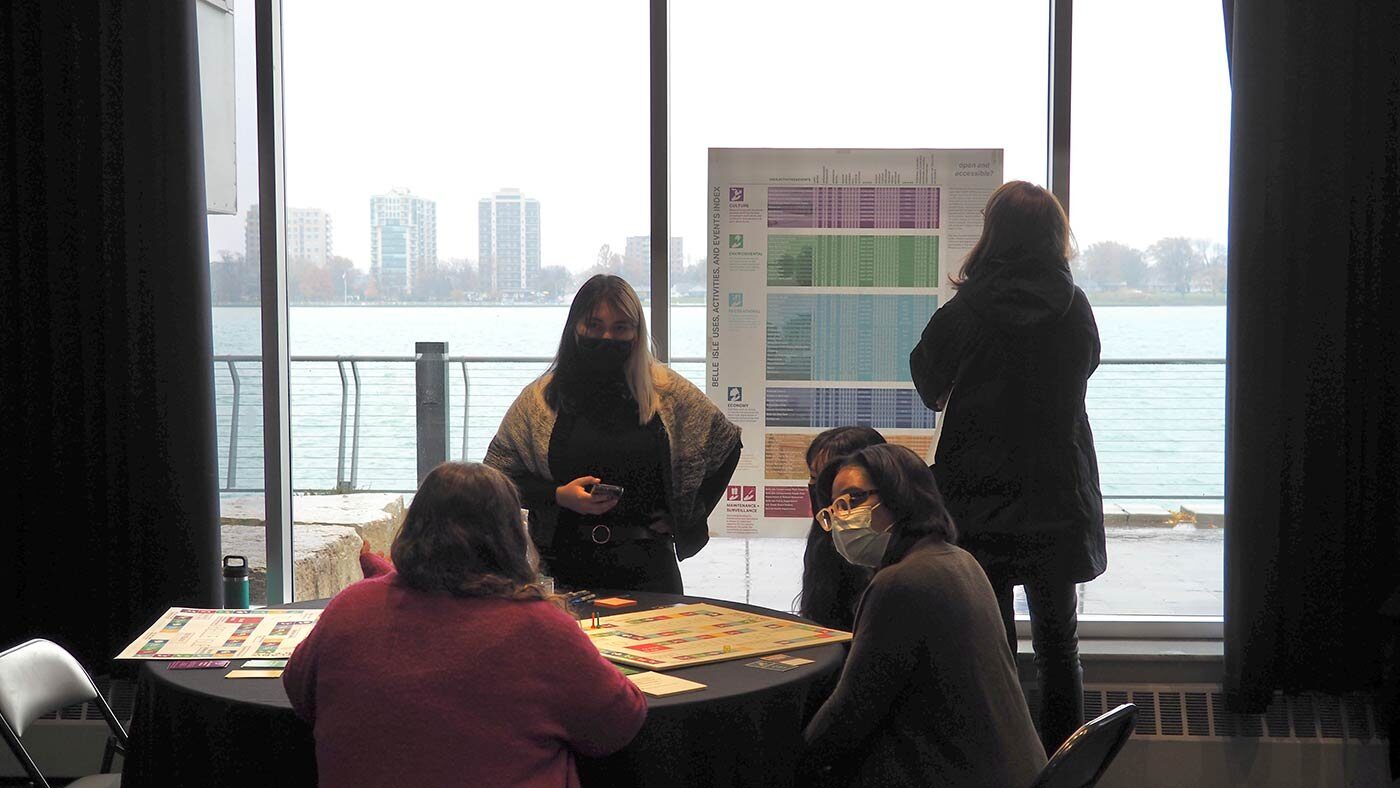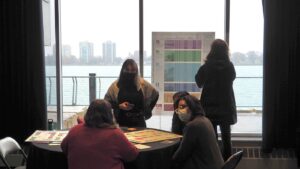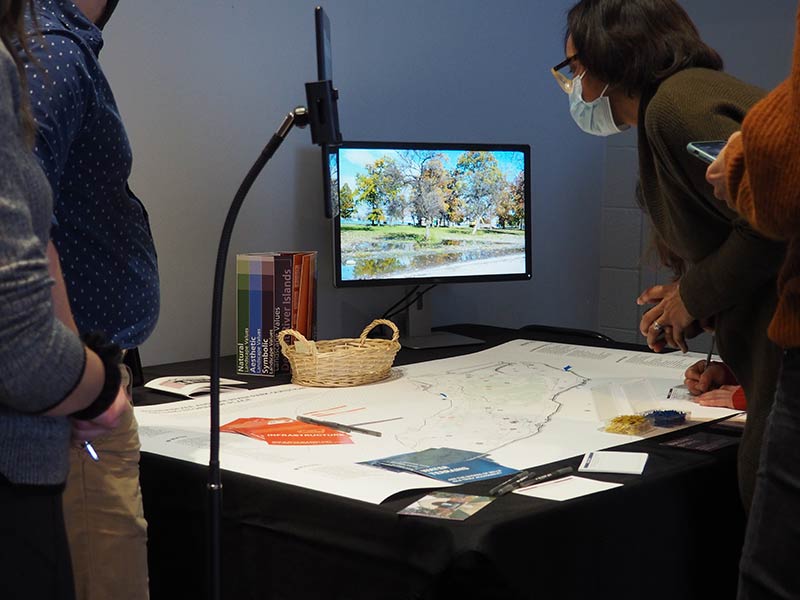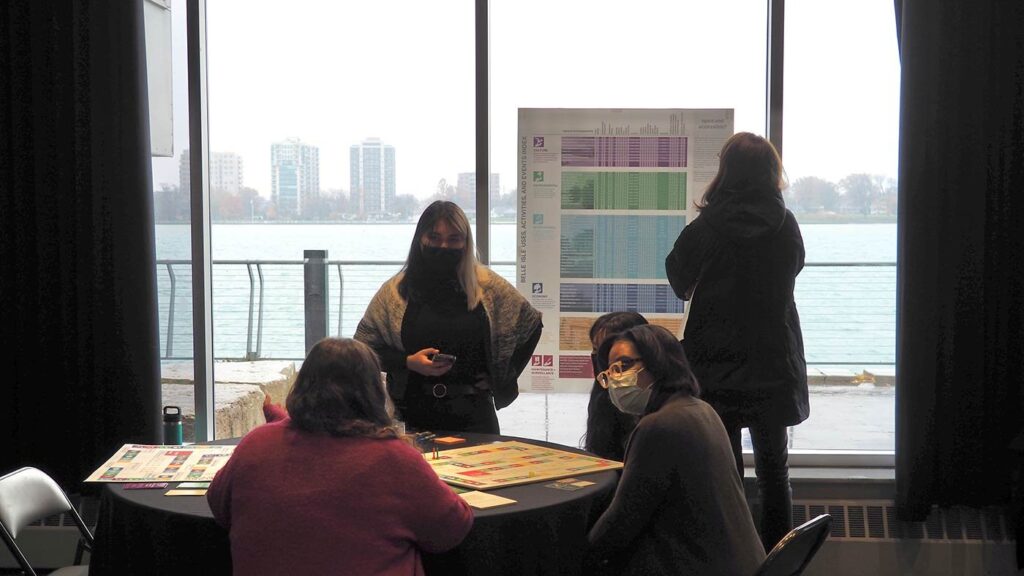Source: Taubman College

Taubman College students in the Detroit River StoryLab Physical Planning and Design Workshop shared their final projects during a public event at the Dossin Great Lakes Museum.

Taubman College students in the Detroit River StoryLab Physical Planning and Design Workshop shared their final projects during a public event at the Dossin Great Lakes Museum.
More Info
During the fall 2021 semester, Taubman College students in the Detroit River StoryLab Physical Planning and Design Workshop experimented with storytelling and representation strategies in collaboration with the Detroit Historical Society.
Led by María Arquero de Alarcón, associate professor of architecture and urban and regional planning, students explored Wahnabezee — or Belle Isle, as the island park is known today — through oral and written histories, archival material, maps, photographs, and site visits to gain a multi-layered reading of the island and its hidden stories.
Students from across the architecture, urban and regional planning, and landscape architecture master’s programs collaborated in the workshop as they investigated ways to co-create past, present, and future imaginations of Belle Isle with the public.
To understand the cultural and pedagogical processes that shape collective perceptions and (hi)stories of the island, the workshop explored the role of informal learning settings and co-creation of knowledge when learning about place. In addition to collecting various temporal, social, and cultural accounts of Belle Isle, student projects were designed to provoke an exchange and critique of ideas and imaginations with their audiences.
In November, the students co-hosted a public session at the Dossin Great Lakes Museum on Belle Isle with members of the Detroit Historical Society to share their work with a public audience. The event was one of the highlights of the course for Tara Grebe, M.U.R.P./M.Arch ‘24.
“I took María’s class because I was interested in learning how storytelling can be used to engage communities in the design and planning fields,” said Grebe. “I loved getting to delve into the complex history of such a popular Detroit landmark through hands-on research trips, then sharing our findings and hearing people’s thoughts on which future interventions could bring a sense of agency to their interactions with the island.”

The urban waters project, which included an original short movie, was one of the student projects from the Detroit River StoryLab Physical Planning and Design Workshop that was on display at the Dossin Great Lakes Museum.
A central pillar of the event was a panel of three Indigenous leaders — Lucy Harrison, Hadassah Greensky and Joe Reilly — who welcomed guests to their ancestral lands, engaged with student work, and shared their personal experiences and stories of stewardship and care for the island.
The final maps, counter-maps, interactive timelines, board games, and digital media designed by the students invited the audience to play, map, draw, and share their own stories, memories, and imaginations of what the island is and may be. The work reflects an interpretation of Belle Isle as a living cultural landscape in the making, with many untold histories and enduring questions of space, sacredness, and societal reckoning.
For Nkule Mseleku, M.U.R.P. ‘23, creating a series of interactive online maps about the island’s urban natures provided a new approach to communicating information with a public audience. Swiping layers on and off maps through a tablet’s touch screen, for example, left a memorable impression on guests and students learning through her team’s project.
“Counter-mapping is a concept I did not know about until I took this class, and it’s an important way to engage with the audience,” said Mseleku. “It can help create a stronger deliverable, and encourages others to get involved and not fear participation.”
Read more about the Detroit River Story Lab in this recent Michigan News story.


